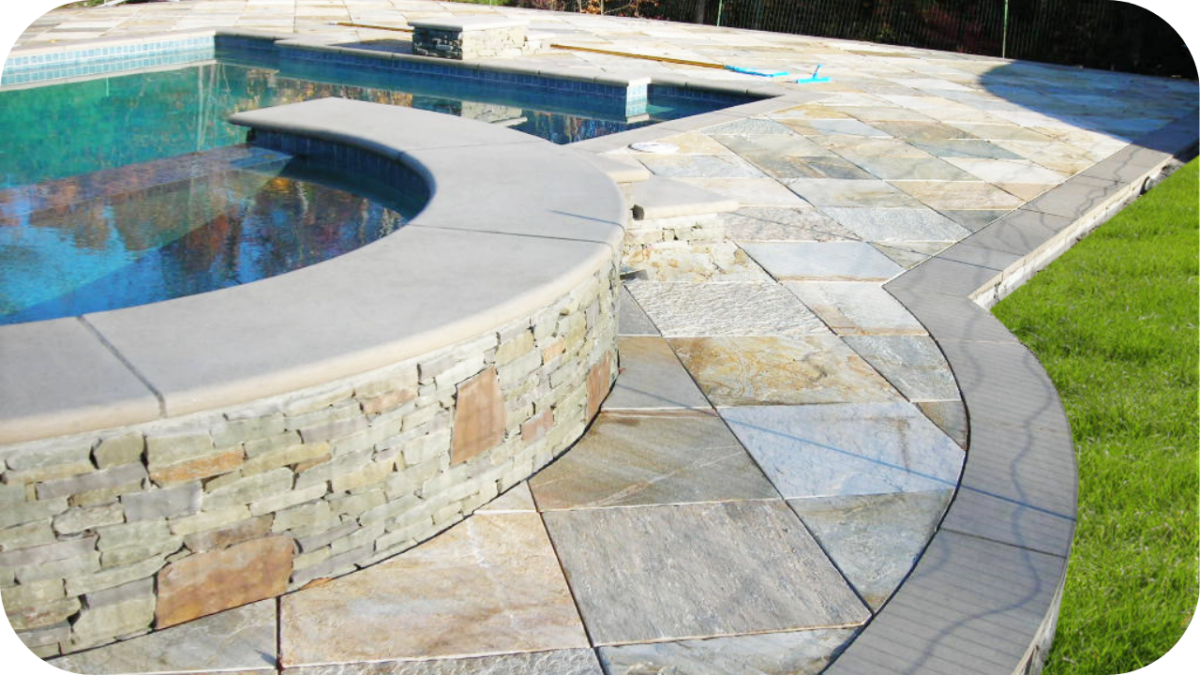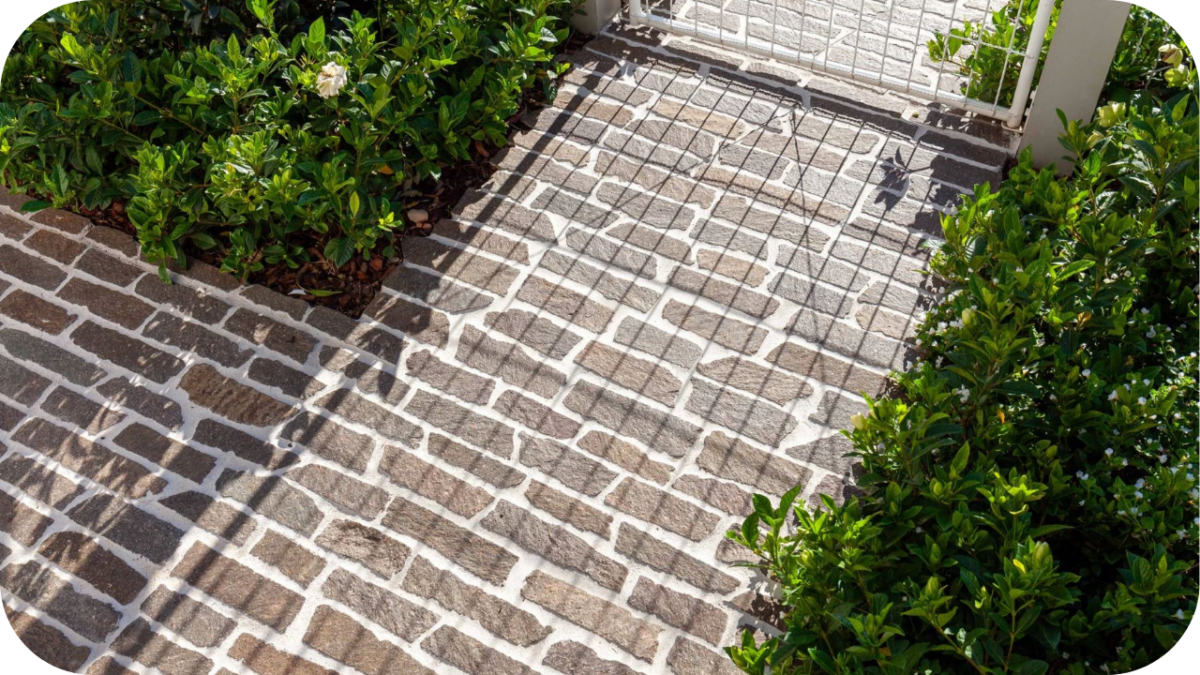Is Travertine Ideal for Patio Flooring?
Looking for a natural stone that is both stylish and practical for your outdoor space? Travertine might just be the answer.
Travertine is one of the most popular materials in outdoor design, especially for patios, pool surrounds, and garden paths. Its warm, earthy tones and naturally textured surface bring elegance and comfort to any outdoor living area, while offering impressive durability against the elements.
In this article, we will cover the key advantages of travertine, important considerations before choosing it, comparisons with other materials, and whether it is the right fit for your patio project.
Is Travertine Ideal for Patio Flooring?
Yes, travertine is an excellent choice for patio flooring due to its durability, slip resistance, and timeless style. It stays cool underfoot, handles harsh outdoor conditions, and blends effortlessly with natural landscapes. Travertine offers a practical yet elegant solution for creating comfortable, long-lasting Australian patio spaces.
Why Travertine Is a Popular Choice for Patio Flooring

Travertine is not just beautiful; it offers real performance advantages outdoors. Here is why it remains one of the most trusted natural stones for premium patio spaces.
1. Provides Natural Slip Resistance for Safer Patios
Travertine’s naturally textured surface provides excellent grip, even when wet. It makes patios safer for children, elderly family members, and entertaining spaces where foot traffic is frequent and surfaces can become slippery.
2. Stays Cool Underfoot in Summer Heat
Unlike darker stones that absorb and radiate heat, travertine reflects sunlight and stays cool. This makes it perfect for barefoot areas like patios, pool decks, garden walkways, and outdoor entertaining zones.
3. Delivers Timeless Aesthetic Appeal for Outdoor Spaces
Travertine’s soft, earthy tones blend effortlessly with gardens, landscaping, and architectural elements. It suits both contemporary and traditional designs, creating a natural, welcoming look that never goes out of style.
4. Offers Impressive Durability and Weather Resistance
Travertine can handle harsh outdoor conditions, including freeze-thaw cycles, sun exposure, and rain. It naturally resists cracking, making it a reliable, long-term option for patios across varied Australian climates.
5. Allows Versatile Design and Layout Options
Travertine is available in a range of finishes, sizes, and patterns. Whether you prefer French pattern layouts, straight-set designs, or random paving, travertine adapts easily to your patio vision.
Travertine vs Other Patio Flooring Options

Choosing the right patio material affects comfort, style, and durability. Here is how travertine compares to other popular options like concrete, porcelain, and bluestone.
| Feature | Travertine | Concrete | Porcelain | Bluestone |
| Slip Resistance | Naturally textured, excellent when wet | Can be slippery unless textured | Slip-resistant finishes available but can become slick when wet | Moderate grip, depends on finish |
| Heat Retention | Reflects heat, stays cool underfoot | Absorbs heat, can become hot | Stays relatively cool, but some dark porcelain heats up | Absorbs and retains significant heat |
| Durability | Withstands weather, freeze-thaw cycles, and outdoor elements | Durable but prone to cracking with temperature shifts | Highly durable and stain-resistant | Very durable, though edges can weather or chip over time |
| Visual Appeal | Natural, warm, organic look with earthy tones | Industrial look unless textured or stained creatively | Consistent and uniform appearance | Rugged, strong look with deep blue-grey tones |
| Maintenance Requirements | Low maintenance, periodic sealing recommended | Requires regular cleaning and resealing | Minimal maintenance, easy to clean | Needs sealing to resist stains and weathering |
| Longevity | Long-lasting with correct sealing and care | Shorter lifespan, prone to cracking | Very long lifespan with minimal fading | Long lifespan, may weather naturally over time |
| Cost | Moderate upfront investment, adds long-term value | Lower upfront cost but higher maintenance over time | Moderate to high depending on type | High for premium grades, moderate for standard selections |
Design Ideas Using Travertine for Patios

Travertine offers endless design possibilities to elevate your outdoor living spaces. Here are some creative ways to use this versatile stone for a stunning, timeless patio layout.
1. Lay Travertine in a French Pattern for Classic Elegance
French pattern layouts use a mix of different tile sizes, creating an effortlessly sophisticated, old-world look. This design enhances both traditional and contemporary patios, adding movement and visual interest to large open spaces.
2. Create a Relaxed Look with Random Ashlar Layouts
Random ashlar patterns combine different shapes and sizes of travertine tiles, laid without a strict sequence. This approach delivers a relaxed, organic feel perfect for garden patios, informal dining areas, or rustic landscapes.
3. Pair Travertine with Garden Features for Seamless Integration
Blend travertine patios with surrounding greenery, water elements, and firepits. The stone’s soft colours and natural texture enhance the beauty of landscaping elements, creating harmonious, tranquil outdoor entertaining and lounging spaces.
4. Mix Travertine with Timber Decking for Textural Contrast
Combining travertine pavers with warm timber decking or seating areas introduces visual and tactile contrast. This combination highlights the natural qualities of both materials and suits both contemporary and resort-style outdoor designs.
5. Use Brick or Gravel Borders to Frame Travertine Spaces
Framing travertine patios with brick edging or gravel pathways adds definition and structure. It provides an opportunity to introduce contrasting textures while enhancing drainage and maintaining a polished, well-designed garden setting.
Installation Tips for Travertine Patio Flooring

Proper installation is essential to maximise the beauty, durability, and lifespan of your travertine patio. Here are the most important tips to achieve a flawless result.
- Use a stable, compacted base for lasting support: Lay travertine on a well-compacted crushed rock or concrete base to prevent shifting, cracking, and settling over time in outdoor conditions.
- Ensure proper drainage beneath and around the patio: Create a slight slope to direct water away from the surface, preventing staining, mould growth, and damage to the foundation materials.
- Select the right joint width for outdoor conditions: Leave consistent gaps between tiles and use flexible, weather-resistant grout to manage expansion, enhance durability, and maintain a seamless appearance.
- Seal the travertine before and after installation: Apply a penetrating sealer before grouting to protect against stains, then reseal after installation to preserve colour and improve long-term performance.
- Hire a professional installer experienced with natural stone: Experienced installers ensure correct laying techniques, effective drainage planning, and beautiful finishes that protect your travertine patio for many years.
Maintenance Tips to Keep Travertine Looking Its Best

A few simple practices can keep your travertine patio looking beautiful and performing well for years. Here are the most important maintenance tips to follow.
- Sweep regularly to prevent dust and grit buildup: Frequent sweeping prevents dust, leaves, and debris from scratching the stone surface or settling into joints, keeping your patio fresh and attractive year-round.
- Clean with pH-neutral products only: Use a pH-neutral cleaner and a soft mop to avoid damaging the stone. Harsh, acidic cleaners can erode travertine’s surface and affect its protective sealant.
- Reseal every 1 to 2 years depending on exposure and foot traffic: Periodic resealing protects travertine from moisture, staining, and fading. High-traffic or exposed areas may need sealing more frequently to maintain optimal appearance.
- Address spills and stains promptly: Quickly clean up spills, especially oil, wine, or acidic substances. Immediate action helps prevent stubborn stains and keeps the natural beauty of travertine intact.
- Inspect for any signs of wear or damage: Check for cracked grout, shifting tiles, or surface etching during seasonal cleanings. Early repairs help preserve your patio’s structure and prevent larger issues later.
Conclusion
Travertine is a smart, stylish, and lasting solution for outdoor patios. Its natural slip resistance, cooling properties, timeless beauty, and durability make it ideal for Australian outdoor spaces. With proper care, travertine offers long-term value and a luxurious feel that few materials can match.
Ready to transform your patio with the beauty and practicality of travertine? Speak to the team at Splendour in Stone today for expert advice and premium-quality stone selections tailored to your project.















